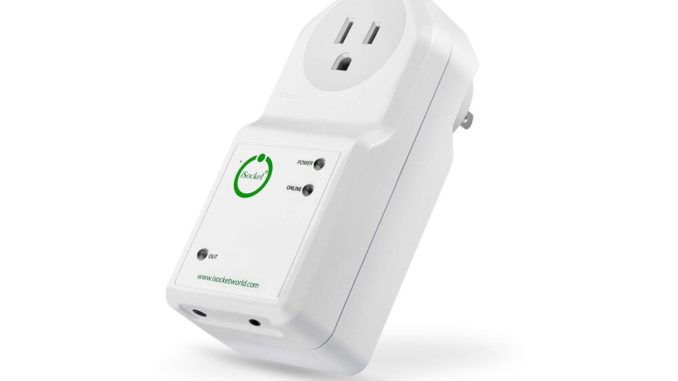
by Larry Magid
This post first appeared in the Mercury News
Listen to “Getting a call in the event of a power failure” on Spreaker.
Larry’s CBS News Radio ConnectSafely Report about iSocket device
Twice in the last few weeks, the power to my neighborhood went out in the middle of the night. As far as I know, it had nothing to do with the heat-related rolling blackouts that affected other communities, but it was a reminder that we can’t take the energy grid for granted. Someday I hope to have solar power with battery backup to be completely self-sufficient, but I haven’t yet taken that expensive plunge.
The last time the power went out was at 4:52 a.m. on Sunday morning and it was restored at 7:12 a.m. The reason I know the exact times is because I have an iSocket plugged into one of my power outlets. The device has a built-in cellular modem that sends me a text message and calls me with a recorded message when the power goes and again when it’s restored.
I wrote about the first iteration of the device in 2018, but the company has just introduced a new model called Plug-and-Go iSocket. With the old model, you needed to arrange for and pay for your own cellular service and insert a SIM card. The new version doesn’t require a SIM card or a cellular account. It costs $199, and there is a $3.99 a month service charge after the first free month of use. That charge covers the cost of the cellular service that’s built into the device.
Because it has a cellular connection, there is no need to connect it to WiFi, and unlike WiFi, the cellular modem can work even if the power is out. WiFi will automatically stop working if the power to your modem and/or router goes out.
Aside from being cheaper than most cellular services, the fully integrated account makes it a cinch to install. You simply plug it in and go to the company’s website to tell the service what number to call and/or text if there’s an outage.
In the event of an outage, you get a call with a recorded message plus a text message. There’s a follow-up message when the power is restored.
My original interest in the iSocket was to protect the food in my freezer in case there was a power failure when I’m away from home. Even if the power failed when I’m out of town, I could ask a neighbor to take food out of my freezer and refrigerator. So far, I’ve never had to make such a request. The power has gone out a few times. but I’ve always been home, and it’s never been out long enough to ruin the food. But I now have another reason to want to know if the power goes out, especially in the middle of the night.
About a year ago. I was diagnosed with a mild case of sleep apnea, so I now sleep with a CPAP machine that’s plugged into an outlet. My case is mild enough that I wouldn’t sustain serious harm if I had to sleep without the CPAP, but when the power does go out, it cuts off the air flow to the mask, which actually makes it a bit harder to breath than having no mask at all. Fortunately, thanks to the iSocket, I got a call the other night when the power failed, and I was able to take off the mask and plug the CPAP into a battery backup system to get through the night.
Battery backup
My backup system is a $167 EnginStar 350W Portable Power Station, which provides more than enough power to keep the CPAP machine running all night. So far, the power has always come back on within a few hours, but if I were ever in a prolonged power failure, I could re-charge it with the 60 Portable Solar Panel that I purchased for an additional $94.The solar power station comes with adaptors for many different types of machines as well as USB plugs that can be used to charge a phone and other devices. That Enginstar power station could also be used to keep a cable or fiber internet modem and router going and/or power a computer in the event of a power failure. Battery backup units like this can also be handy when camping or when you need power away from an outlet.
In addition to alerting you of a power failure, the new version of the iSocket can accommodate optional accessories including a smoke and heat detector, a water leak sensor, a gas leak detector, and a smoke and heat detector. There are numerous similar battery backup systems on the market with varying amounts of wattage and watt hours, depending on your needs. Some can accommodate high watt devices and run for longer periods of time.
Hopefully, I won’t be getting any more calls telling me my power went out, but given the risk of additional heat plus the possibility of the power being cut off due to fire danger, I’m not taking any chances.